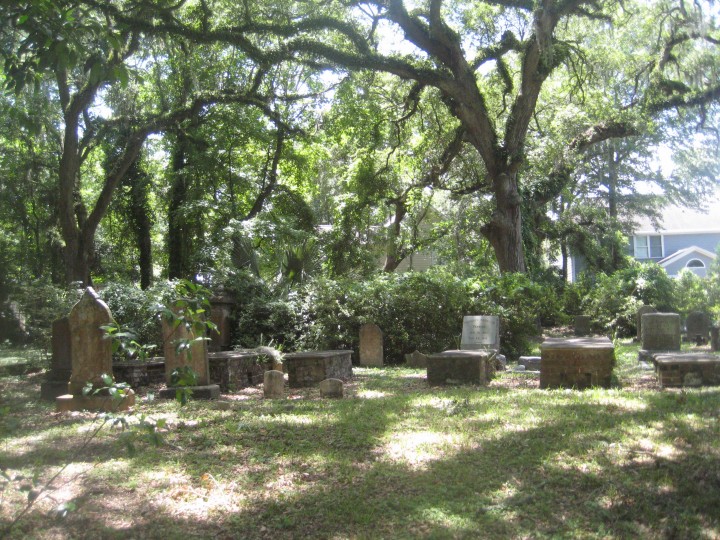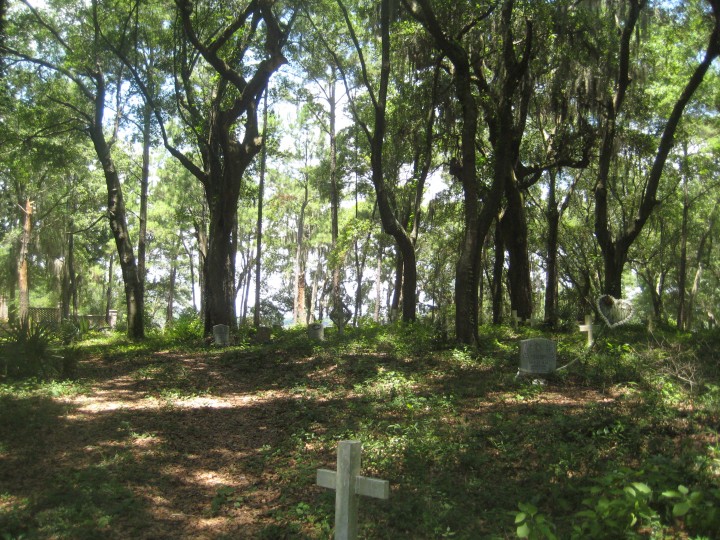
What is it about old cemeteries that we find so intriguing? Maybe it’s the serenity and natural beauty. Maybe it’s the history. Maybe it’s thoughts of the hereafter. Regardless, the East Cooper area has more than enough historic graveyards to evoke any of these pondering.
Quite a few are in some rather unlikely places. Myrtle Grove is barely noticeable on busy Venning Road, separated from the Laurel Lakes neighborhood by a chain-link fence. The Legare-Wagner Cemetery is on a roundabout at the Dunes West golf course. And the Lucas Family Cemetery is nestled between two residential lots in Shemwood. These neighborhoods were built on former plantations.
Cook’s Old Field, or Hamlin Cemetery, where members of the Hamlin, Hibben and Leland families are buried, is in a more rural location on private land. James Hibben, who owned several plantations, including one aptly named Mount Pleasant, which he eventually divided into a village of 35 residential lots, lies there. This small village eventually merged with part of Greenwich Village, land owned by the Lucas family, to form what we now call the Old Village.
It’s highly unusual to see the grave of an African-American in a plantation family cemetery, but the remains of “Mike, a faithful servant,” are at Hamlin. Mike was the head “slave driver” on the plantation, and his grave is marked with a headstone. Another African-American, Amanda Switzer, was the family’s housemaid, first as a slave then as a free person after the Civil War. According to records, she is buried just outside the cemetery fence in an unmarked grave.
Slaves were usually buried on less desirable areas of the plantation, and that was the case with the slave cemetery on the former Lucas plantation. Although the family plot is on high ground, not far from where the family’s home once stood, the African-American cemetery is on the banks of Shem Creek, near where a historical marker indicates there was once a rice and saw mill. However, the exact location of the graves is unknown.
Plantation owners seldom recorded the location of their slave burial grounds. Subsequently, very few black cemeteries from previous centuries are preserved, often because no one knows where they are. Decades ago, an African-American graveyard was discovered during the construction of a motel on Magrath Darby Boulevard in Mount Pleasant. Archaeologists and anthropologists identified 36 skeletons, all dating from 1840 through 1870.
Even when local authorities are aware of the location of African-American cemeteries, many are declared “abandoned” or “inactive” due in part to the absence of grave markers. But granite headstones were not used by blacks in centuries past; graves were marked in a less permanent way. Shells often were used, symbolic of the sea that brought their ancestors to the Western Hemisphere and will take them into the hereafter – an analogy often verbalized in traditional Gullah spirituals. Mirrors or glass are also found at grave sites, symbolizing the afterlife as the mirror image of the earthly life. Most common is the placement of broken pottery and other household items belonging to the deceased. This tradition has been depicted in stories by prominent Southern writers including Dubose Hayward – “The Half Pint Flask” – and William Faulkner – “Go Down, Moses.” Graves are often placed randomly which, one African-American man said, makes it possible to always allow room for one more person. Graves are often identified simply by mounds or depressions in the earth.

Remley’s Point Cemetery, also known as Scanlonville Cemetery, originally was the burial ground for slaves on yet another plantation, and, today, it is enveloped by upscale residential development. Like the African-American cemetery in Shemwood, it is adjacent to the marsh and creek, and, in keeping with Gullah tradition, it is overgrown with brambles and trees. The number of graves is estimated to be in the hundreds, although only more recent ones are marked with headstones.
There are two historic cemeteries on Sullivan’s Island, where, a century ago, a quarter of the residents were black. The African-American cemetery was originally adjacent to the white cemetery two blocks away, but today is separated by Ben Sawyer Boulevard. The black cemetery was considered abandoned until a decade ago, but the late Elmore Brown and a group he called “original islanders” were able to preserve the site and avert development.
All of these cemeteries, as well as the better-known Christ Church, St. Paul’s, Ocean Grove and Carr Street Confederate Cemetery, remind us that, even amid today’s hustle and bustle, we are surrounded by East Cooper’s past.
Story and photos by Mary Coy.

Leave a Reply